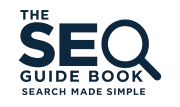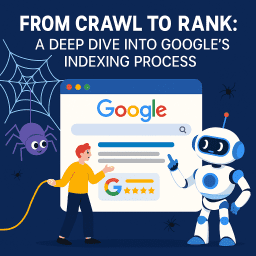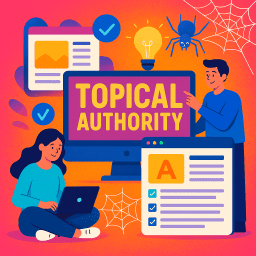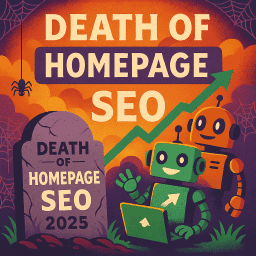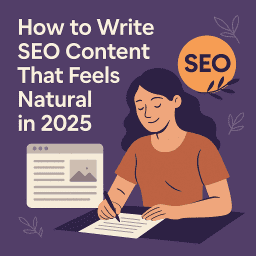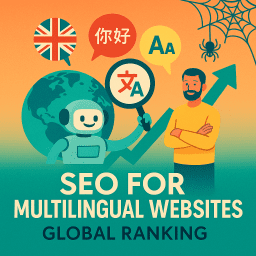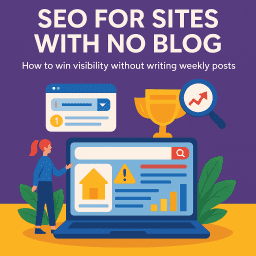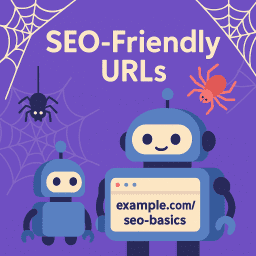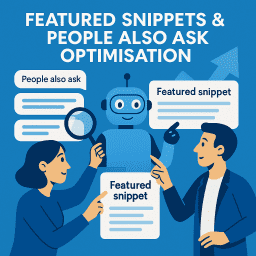Master Internal Linking for SEO in 2025: Anchor Text & Strategy
Improve rankings quickly with smarter site structure
🚀 Internal Links: Your Fastest SEO Win
Internal linking is one of the most underrated weapons in the SEO arsenal. It’s fast, free, and—when done right—can significantly boost your rankings with minimal effort. Yet many websites either ignore it entirely or use it in a haphazard way that does more harm than good.
In this guide, we’ll explore how to master internal linking for SEO in 2025, focusing on link depth, orphan pages, anchor text, and the battle between silo structures and topic clusters.
🔗 Why Internal Linking Matters
Internal links help search engines understand the structure and hierarchy of your site. They also distribute link equity (or “link juice”) and guide users to related content. Done well, they improve crawlability, user engagement, and keyword rankings.
📚 Link Depth: Keep It Close
Link depth refers to how many clicks it takes to reach a page from your homepage. Key pages should never be more than 3 clicks deep. The deeper a page is buried, the less likely it is to be crawled regularly—or rank well.
- 🧭 Aim for a flat site architecture.
- 📉 Prioritise internal links to deeper content that matters.
- 🔍 Review your navigation to see what’s hidden too far down.
🕳️ Orphan Pages: Stop Wasting Content
Orphan pages are pages that have no internal links pointing to them. This makes them nearly invisible to both users and search engines. Even great content can fail to rank if it’s isolated.
To fix this:
- 🔎 Use tools like Screaming Frog or Ahrefs to identify orphan pages.
- 🧱 Link to them naturally from related posts or pillar content.
- 📊 Reintroduce them into your content strategy with updated keywords.
🏷️ Anchor Text: Be Descriptive, Not Spammy
The clickable text you use for links (anchor text) gives context to both users and search engines. Avoid vague phrases like “click here”—and definitely don’t over-optimise with exact-match keywords every time.
Best practices:
- 📝 Use natural, relevant language that fits the content.
- 🧠 Vary your anchor text to avoid penalties.
- 🔗 Include partial matches or semantically related terms.
🏗️ Silo Structures vs Topic Clusters
Historically, sites used silo structures to organise content into tightly themed categories. While this can still work, Google increasingly favours topic clusters—interlinked pages that comprehensively cover a subject.
Silos: Hierarchical, with limited cross-linking between sections.
Clusters: Central “pillar” page links out to (and receives links from) related subtopics.
For SEO in 2025, topic clusters are generally more effective because they demonstrate topical authority and improve content discoverability.
🚧 Common Internal Linking Mistakes
- ❌ Linking every page to every other page (creates noise, not clarity).
- ❌ Using identical anchor text site-wide.
- ❌ Forgetting to update links after URL changes or content pruning.
✅ Tools to Audit Your Internal Links
Want to know how your internal links are performing? Try these tools:
- 🔍 Ahrefs – Site Audit > Internal Linking Opportunities
- 🕸️ Screaming Frog – Crawl your site and visualise link structure
- 📊 Google Search Console – Internal links report
💬 What the Experts Are Saying
- Rand Fishkin: “Internal links that tend to perform the best … are the ones that drive real traffic, and they sort of continue a visitor’s journey.” Source
- John Mueller (Google): “It doesn’t need to be the same, but it should be crawlable.” Source
- Lily Ray: “Strengthen internal linking using Link Whisperer or InLinks.” Source
- Cyrus Shepard: “Optimizing internal linking—especially your navigation—can yield the biggest SEO gains I see.” Source
📈 Final Thought: Link With Purpose
Internal links aren’t just for navigation—they’re signals of relevance, authority, and structure. When used strategically, they guide users on a journey through your site and help search engines understand how your content fits together. But many site owners treat internal linking as an afterthought, throwing in links wherever they seem convenient. That’s a missed opportunity.
Every internal link should have intent. Ask yourself: Why am I linking to this page? What value does it add for the user? How does it support my overall content strategy? These small decisions add up to a massive impact on crawlability, keyword targeting, and ultimately—rankings.
Also remember: quality over quantity. Don’t just stuff your articles with links for the sake of it. Too many internal links can dilute their value and confuse users. Instead, focus on contextually relevant links, clear anchor text, and keeping your content connected in a logical, useful way.
Done properly, internal linking is one of the most powerful (and often neglected) SEO techniques available. It helps search engines find and prioritise your most important pages, increases user engagement, and gives your website the kind of structure that both bots and humans love.
“Think of internal links as road signs for both users and search engines. If your signs are missing, broken or pointing the wrong way, don’t be surprised when no one gets to where they’re supposed to go.”
– David Roche
🔗 Internal Linking SEO 2025 – FAQs
Why is internal linking still crucial for SEO in 2025?
Internal links pass authority, help Google understand page relationships, and guide users through topical clusters—signals the 2025 ranking systems weigh heavily.
How many internal links should a page have?
There’s no hard cap, but aim for 3–8 contextual links in the main copy and keep total links per page under ~150 to avoid dilution.
What’s the best practice for anchor text in 2025?
Use concise, descriptive phrases that match the target page’s primary keyword or entity—avoid generic “click here” anchors.
Does link placement on the page affect SEO value?
Yes—links in the main body, especially above the fold, tend to carry more weight than those in footers or sidebars.
Should I add nofollow to any internal links?
Rarely. Use nofollow only for boilerplate links that don’t need to pass equity—e.g., login pages or duplicate T&Cs.
How does internal linking build topical authority?
Linking related articles and service pages in clusters helps Google map subject breadth and depth, boosting rankings across the whole topic.
Are breadcrumb links still recommended?
Yes—breadcrumbs improve UX and give crawlers clear hierarchy signals. Mark them up with BreadcrumbList schema for extra clarity.
Which tools help audit my internal links?
Screaming Frog, Sitebulb, and Ahrefs’ Site Audit highlight orphan pages, broken links, and anchor-text distribution.
How do I fix orphan pages quickly?
Add at least one contextual link from a related high-authority page and include the orphan in your XML sitemap.
What’s the fastest internal-linking win for 2025?
Insert links from your highest-traffic posts to underperforming money pages using keyword-rich anchors—often lifts those pages within weeks.
